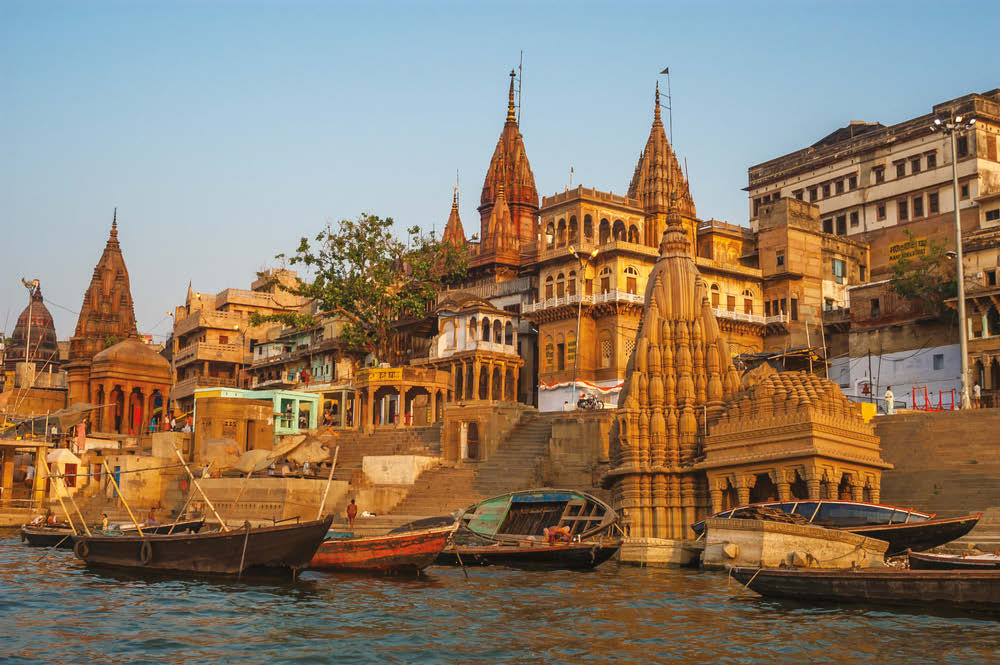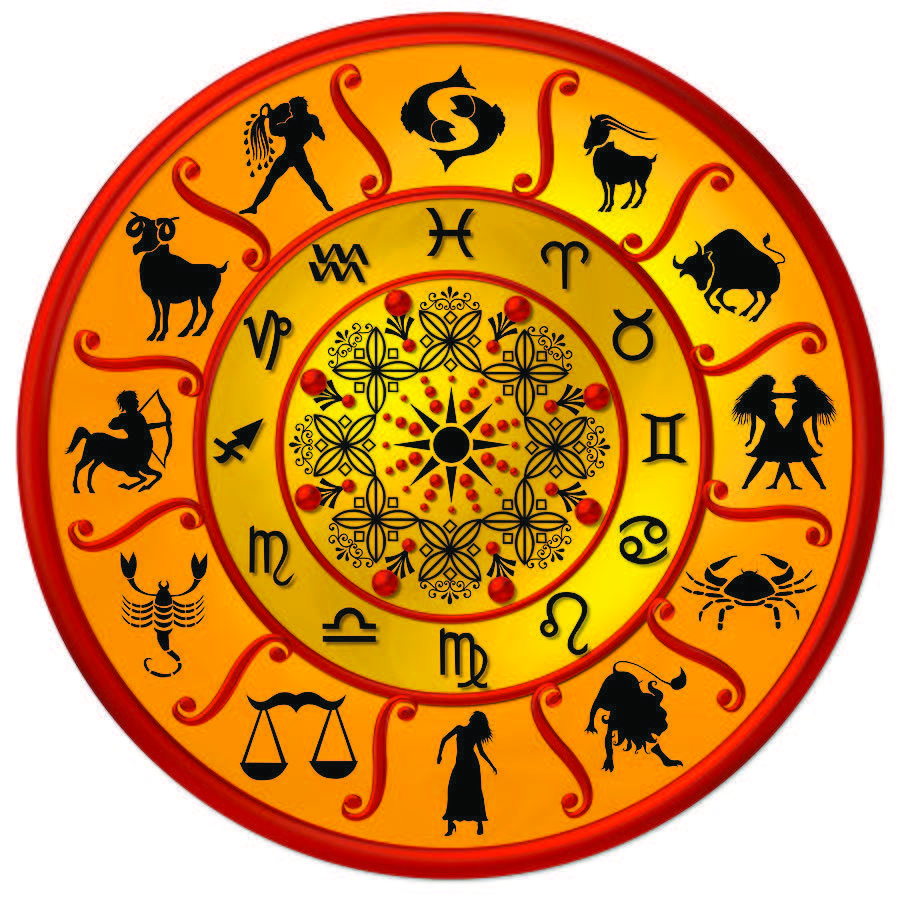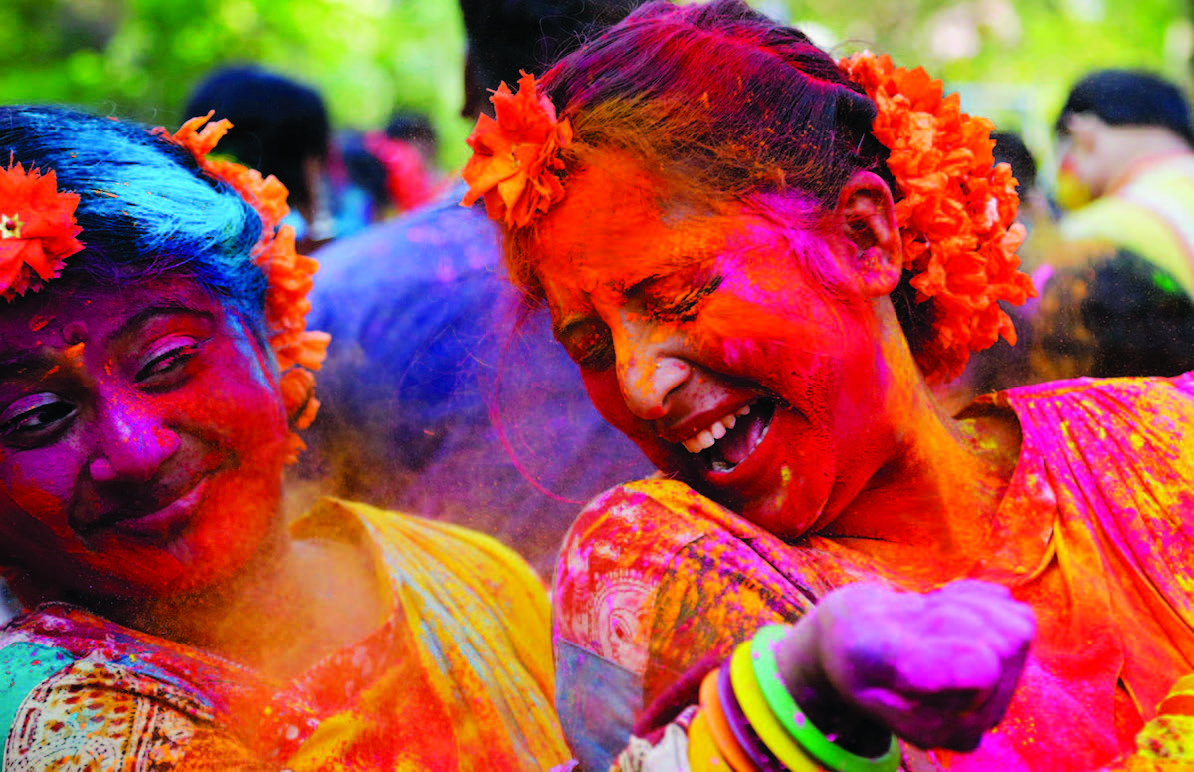
There are many legends associated with the ancient city of Varanasi or Kashi. It is believed that the Hindu god Shiva and his consort Parvati lived here on the banks of the Ganga River. It was here that the rivers Varuna and Assi originated and locked a piece of land that flourished decidedly as a Hindu pilgrimage site, specifically as the holiest cremation spot to attain salvation. Till date, Manikarnika and Harishchand ghats see as many as 200 cremations a day. Beside the association of life and death on the ghats, Varanasi has a number of temples, the Buddhist pilgrimage Sarnath and the adjacent towns of Chunar and Ramnagar as veritable sight seeing spots. Though one can spend weeks exploring the temples on the ghats, here are the places you must visit.
SARNATH The Buddhist pilgrimage, Sarnath lies 10 km from Varanasi, and is yet another attraction that appeals to people from all around the world. This is the place where Gautum Buddha first gave his sermons on Dharma. The main deer park complex and a number of other Buddhist temples can be seen here. The Mulgandha Kuti Vihar temple, the Archaeological Museum, the Dhamek Stupa, the Chaukhandi Stupa and ruins of monasteries are the key highlights here. Other modern structures like the Japanese & Korean temples have been added to the Sarnath topography in the last few decades. Go early so you can beat the rush of tourists through the day and enjoy the tranquil ambience of these Buddhist relics.
 KUSHTI AKHADAS The archaic gyms of Varanasi are still buzzing with activity in the mornings as youngsters come here to wrestle in the mid pits and work out with age-old weights. The wrestling rinks have mud that is brought from nearby villages and mixed with turmeric, curd and neem to infuse it with therapeutic properties.
KUSHTI AKHADAS The archaic gyms of Varanasi are still buzzing with activity in the mornings as youngsters come here to wrestle in the mid pits and work out with age-old weights. The wrestling rinks have mud that is brought from nearby villages and mixed with turmeric, curd and neem to infuse it with therapeutic properties.
VARANASI’S GHATS The stepped banks (ghats) lie in a crescent shape along the Ganga River in Varanasi. These spring into action as early as 4 am and are buzzing with activity until late night. Hiring a boat to ride along the river is a good way to see all the action – morning ablutions, people praying the two burning ghats (photography not allowed even from the boat) and the bright umbrella dotted platforms where priests hold small ceremonies for pilgrims. Old havelis and palaces lie on the fringes of the river, ensuring a stunning landscape of unique architecture along the entire stretch. These are often used as backdrops for Bollywood movies or homes, since most of the royalty has abandoned these. The most spectacular spectacle at the ghats is the Ganga aarti that is held every evening between 6.15 and 7.15 pm on five ghats. Of these, the Dashashwamedh Ghat aarti is the oldest and the most famous one. Five to seven priests perform the daily ceremony with large fire lit lamps, bells and conchs, as hundreds converge towards the ghat in the evening.
CHUNAR FORT Replete with legends, the Chunar Fort lies 37 km from Varanasi and is skirted by the Ganga on two sides. The fort was first constructed in 56 BC, and duly changed hands of ownership from the Afghan and Mughal rulers, to the British until 1947. The first Governor General of India, Warren Hastings also took shelter here when a rebellion broke out in 1781. His house can still be seen in the fort. The fort is often used as a backdrop for TV shows and Bollywood movies. Of these Chandrakanta, and the 2012 Bollywood movie, Gangs of Wasseypur are the most famous. Secret tunnels and hidden pathways are the highlights of this white bastion. It is not uncommon to find military presence here as this used to be a part of a training centre of the army.
GAURI KEDARESHWAR TEMPLE One of the busiest ghats on the Ganga, the Kedar Ghat can be identified by its red and white steps from a distance. Thousands come here each year to pay homage to the Gauri Kedareshwar temple. This can be reached via boat or through the narrow lanes of Bengali Tola. The temple is famous for a replica of the Kedarnath lingam of the Himalayan temple. The irregular humped shaped lingam in stone is encased within a copper railing. People only enter the temple after taking a bath in the Gauri Kund (pond) adjoining the river.
MAN MAHAL The original construction of the astronomical observatory of Varanasi was that of the Man Mahal palace constructed by King Amber in 1600 AD. It was later taken over by Maharaja Sawai Jai Singh, who founded the city of Jaipur and converted into this learning centre. He was a great patron of astronomy and had the famous astronomer, Sadashiva, build this for him on the ghats. The observatory is walking distance from the Dashashvamedh Ghat. The highlights of the observatory include the Samrat Yantra, Laghu Samrat Yantra, Dakshinobhiti Yantra, Chakra Yatra, Digansa Yantra and Narivalaya Dakshin and Uttar Gola.
DURGA TEMPLE The 18th century Durga temple lies south of the main city, away from the ghats. A narrow lane flanked by flower and puja paraphernalia vendors leads up to this ancient temple. Inside, the low roofed, bright red walled temple has a small sanctum with a vivid idol of the Devi riding a tiger, armed with a trident, discus and sword. Navratras are celebrated with great vigour in this temple.
RAMNAGAR The massive red ramparts of the Ramnagar fort can be seen across Assi Ghat on the other side of the Ganga. The Mughal-style fort was built by Raja Balwant Singh in 1750. Though the fort is not an architectural wonder, it is the main draw at the city of Ramnagar. The small city is most famous for its depiction of Ramlila in the most authentic form. The fort has a small museum, which does not require much time. The other highlight here is the Durga temple, which is the venue of the grand aarti held on the last day of the Ramlila. This is the place where Lal Bahadur Shastri was born.
KAL BHAIRAV TEMPLE Kal Bhairav is also known as the ‘kotwal’ or the keeper of the city and commands a significant position in the story of Varanasi. The temple lies away from the main circuit near the ghats and is rather austere in architecture. The sanctum of Batuk Bhairav (child Bhairav) houses a metal idol of the deity, which is offered liquor, chocolates and meat. Infact there are a total of 8 Bhairav temples in Varanasi, which are said to be the protectors of Kashi Vishwanath.
TULSI MANAS MANDIR The all-white Tulsi Manas Mandir is not as old as other temples, but is certainly one of the most popular ones for travellers. Built in 1964, it is dedicated to Lord Ram, and is supposedly on the same place where Tulsi Das wrote the Ramcharitamanas. The well-manicured gardens around the marble temple usher you into a labyrinth of white walls engraved with verses of the Ramcharitamanas, written in the Awadhi language.
SANKAT MOCHAN The Sankat Mochan temple is another famous pilgrimage, dedicated to Lord Hanuman. It lies 4 km from the ghats and can be easily accessed by a rickshaw. This is the same place where the creator of Ramcharitamanas, Tulsi Das envisioned Hanuman and built a temple for him. Hundreds of monkeys liven the temple, which does not promise architectural excellence, but a strong spiritual hook. Tuesdays and Saturdays are especially crowded when parts of Ramcharitamanas are recited at the temple. Photography allowed only outside the temple.
KASHI VISHWANATH TEMPLE Not far away from the Ganga is one of the oldest temples in Hinduism, Sri Kashi Vishwanath Temple. Deriving its name from the city Kashi, the temple was built in 1780 by the Late Maharani Ahilya Bai Holkar of Indore and is one of the twelve Jyotirlingas, the holiest of Shiva temples. The main deity housed within its premises is known by the name Vishwanatha or Vishweshwara, both translating to mean ‘ruler of the universe.’ The temple is also the starting point of the sacred Panchkoshi Yatra—a 88.5 km long barefoot walk encircling Kashi.





Be the first to comment